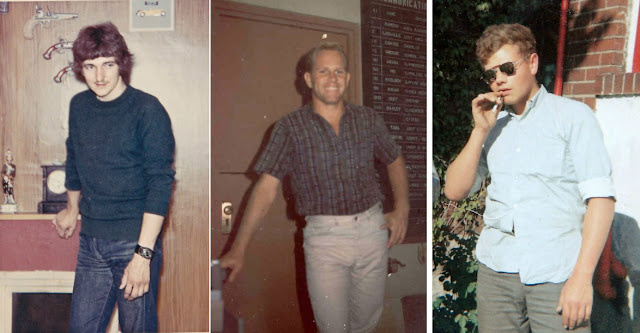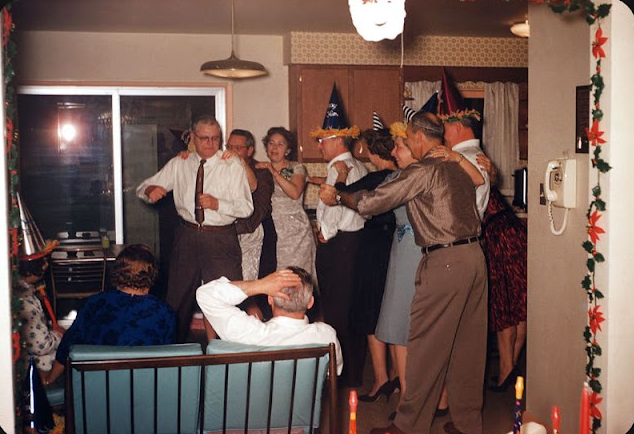Halloween is said to have originated from the ancient Celtic festival of Samhain, a celebration for their new year on November 1. The Celts believed that the veil between the living and the dead was thinnest the night before this day, and so, on October 31 they would burn crops and animals as a sacrifice to their gods. They would also wear costumes made out of animal skins and try to tell each other's fortunes.

Halloween didn't become popular in America until the mid-1800s when millions of Irish people came to the US to flee Ireland's potato famine in 1846, bringing the tradition of Halloween with them. The new Irish and English immigrants helped to nationalize the holiday, and Americans started dressing up in costumes and going door to door looking for food or money - a practice that is now known as trick-or-treating.
When the celebration of Halloween started to grow in popularity in America at the turn of the century, women created their own eerie costumes and ill-fitting papier-mâché masks at home, however more than 100 years later, they can wear almost any costume their hearts desire.
While various styles of traditional Halloween costumes such as ghosts, witches and skeletons still flood stores come October, many women's costumes have evolved and are now symbols of each era's most popular pop culture icons and moments. From eccentric ensembles haphazardly crafted at home in the early 1900s to the sexy versions of anything, Halloween fashions have managed to grow into cultural phenomenons while still holding on to the spooky costumes the holiday first inspired.
1900s
At the turn of the century, costumes were made at home with fabric and papier-mâché. Women often wore their regular clothes topped with bulky homemade masks that looked terrifying at the time - and even more so in the black and white pictures that can still be seen today.
One particular image from 1910 shows a woman wearing black layers, a mask and roller skates to create her haunting costume.
By this time there was a push to turn Halloween into a holiday centered around community and neighborhood parties, rather than mischief.
Leslie Bannatyne, author of Halloween Nation: Behind the Scenes of America's Fright Night, told National Geographic that there was a real effort made to move the holiday towards popular culture in the early 20th century, so Halloween was 'very egalitarian - everyone celebrated in their own way'.
She also noted that in the late 1800s and early 1900s Halloween was thought to be a 'rustic, country holiday', so many costumes were inspired by nature and included cornstalks, vegetables and tree branches.
Meanwhile, dressing as a clown, a ghost, a witch or a sorcerer during this time was a sign of people's fascination with spirits and magic.
'Many of the first Halloween costumes reflected people's interest in the exotic, such as other cultures,' Leslie explained.


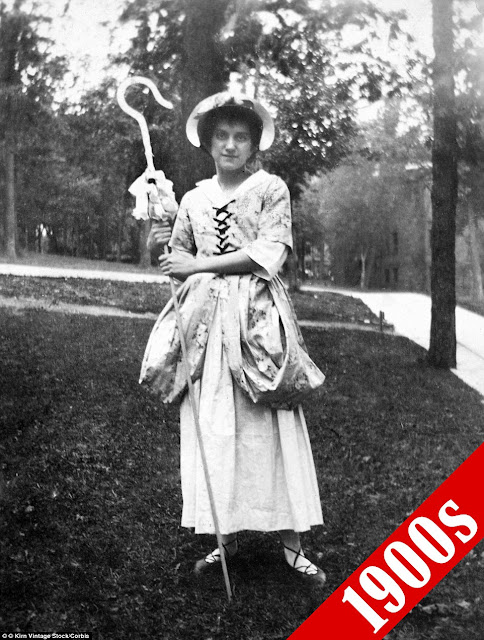


1920s
By the 1920s Halloween was a secular holiday, and communities would throw parades, dances and social gatherings to celebrate October 31, although many youths celebrated the holiday with pranks and acts of vandalism.
During the Roaring 20s people were still creating their own Halloween masks and costumes, although the looks began to appear much more polished, as lavish parties were all the rage at the time.
Women were seen wearing masks and pointed hats along with their drop-waist dresses and skirts, which were incredibly popular at the time, to create a basic witch costume.
Another popular costume during this era was a Pierrot clown - a mime characterized by having a whitened face and wearing a fancy white costume.




1930s
The vandalism, pranks and even physical assaults associated with Halloween only got worse after many families lost everything following the Stock Market Crash of 1929 - which occurred just a few days before the holiday.
According to History.com, it is believed that it was the 'excessive pranks on Halloween that led to the widespread adoption of an organized, community-based trick-or-treating tradition in the 1930s'.
During this decade Halloween was changed forever when Ben Cooper, Inc. and other firms began manufacturing costumes for the mass public.
Although costume licensing began in the 1920s, Charles Moss explained in a story for Slate that Ben Cooper 'excelled at getting licenses to characters before they became popular', noting that the company purchased Snow White from Walt Disney in 1937.
Minnie and Mickey Mouse were first drawn by Ub Iwerks for Walt Disney in 1928, and by the 1930s Minnie Mouse was a popular costume option for women.
However, the eerie oversized masks are a far cry from the pretty Minnie and Mickey costumes that are seen today.
This decade also marked the popularity of Bride of Frankenstein costumes after the film Frankenstein, which was inspired by Mary Shelley's classic horror novel debuted in 1931.
And while spooky costumes such as witches and skeletons remained popular, companies' new licensing deals allowed people to dress as their favorite characters for the first time.
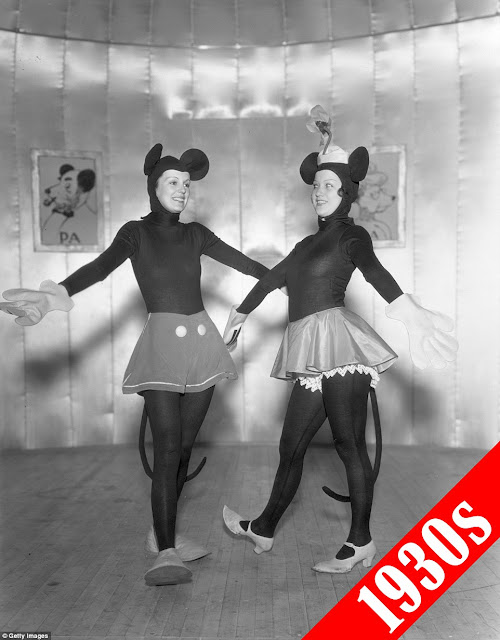

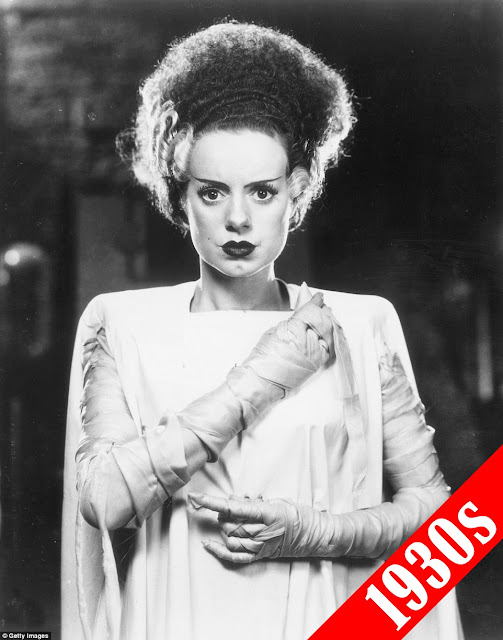
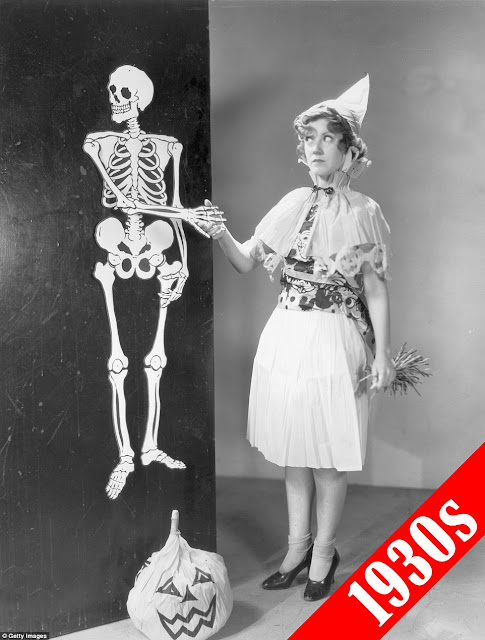


1940s
The tradition of trick-or-treating carried on into the 1940s until it was curtailed by the sugar rationing that started in 1942 during World War II and ended in 1947.
By the the late 1940s Ben Cooper Inc. was one of the largest costume retailers in the country with its products being sold at large stores including J. C. Penney, Sears and Woolworth's.
During this time, traditional Halloween characters such as ghosts, devils, witches and skeletons remained popular costume choices although there were more options than ever because women were no longer confined to having to create their own looks.
It was also during this decade that women's costumes started to become sexier as Halloween-themed pin-ups featured models in cat and witch costumes made out of skimpy black leotards and bustiers.
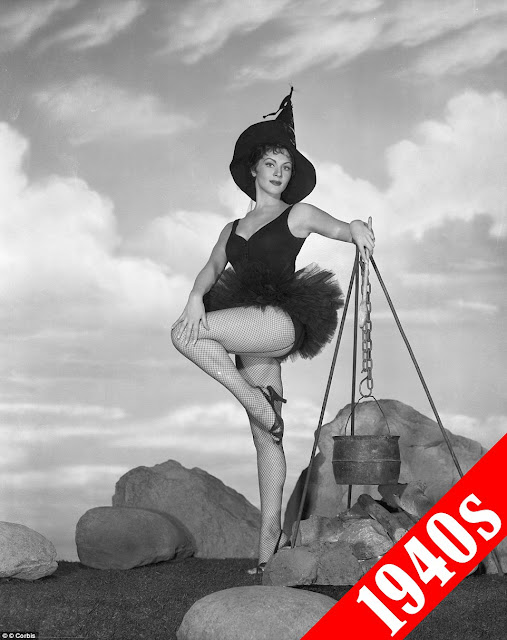

1950s
The 1950s saw the rise of the middle class, and as more and more families went out and purchased their first television sets, people started dressing as their favorite TV characters for Halloween including Superman, Zorro, Davy Crockett, Tarzan and Jane.
Western films and television shows were at the height of popularity during this decade, and many women would dress up as cowgirls and Indians.
Hawaiian prints and 'Cabana sets', which consisted of matching boxer trunks and shirts featuring vibrant prints were popular during this time, and many women donned grass skirts and colorful leis for Halloween.
And whether they went as Tarzan and Jane or the satellite Sputnik and a Soviet officer to represent the 1950s space race, couple costumes also emerged during this time as people started attending more and more Halloween parties.



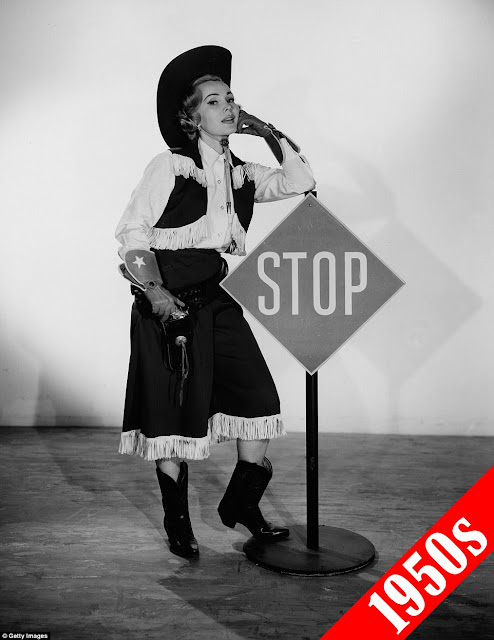

1960s
The 1960s were a time of sexual and political upheaval and fashion, including Halloween costumes, reflected the changing times.
In 1963, Betty Friedan's revolutionary book The Feminine Mystique was released and inspired women to become independent. The book is often credited with starting a second wave of feminism, and throughout the decade more and more women entered the work paid work force and started using contraception.
During this time television characters were as popular as ever, and in 1966 actress Julie Newmar made her debut as Catwoman in the television series Batman, donning a full-length catsuit and cat ears that were paired with a gold necklace and matching belt that was slung across her hips.
Unsurprisingly, after this stunning debut, the 1960s saw a rise in sexy catsuits, as women began to openly embrace their sexuality, as well as political-inspired costumes. It was also during this decade that people started buying masks from stores, rather than making them at home.
This turbulent decade also so the rise in political inspired costumes as presidential masks made there way into stores.
However, after the assassination of President John F. Kennedy in 1963, Ben Cooper Inc. had to destroy several thousand JFK and Jacqueline Kennedy.




1970s
The rise of pop culture continued to dictate Halloween trends in the 1970s, and popular costumes during this decade included beloved superheros and characters such as Raggedy Ann, the Bionic Woman, Wonder Woman, Batwoman and Barbie.
Women started dressing as Princess Leia for Halloween after the iconic film Star Wars was released in 1977 and became a world wide pop culture phenomenon. Princess Leia costumes are still popular today as the film series is more popular than ever.
Political events and figures also remained popular Halloween choices, and after the Watergate scandal in the early 1970s, Richard Nixon costumes grew in popularity and are still sold today.



1980s
By the 1980s women could dress as anything and anyone they wanted as traditional Halloween costumes continued to merge with pop culture-inspired disguises.
This was a decade of wealth and excess, and preppy styles started to become synonymous with the upper middle class.
In 1978 the fraternity-themed comedy Animal House debuted featuring an infamous toga party scene, and a few years later many men and women were celebrating Greek life by dressing in similar costumes.
Elvira costumes inspired by the horror TV host Cassandra Peterson also started popping up during this decade particularly after the release of the 1988 film Elvira, Mistress of the Dark.
And while women continued to dress as popular television and film characters, they also started looking to past decades for inspiration - including the 1920s flapper.



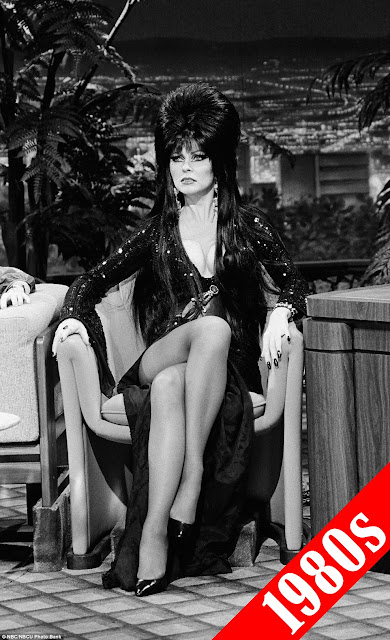
(via Mail Online)
